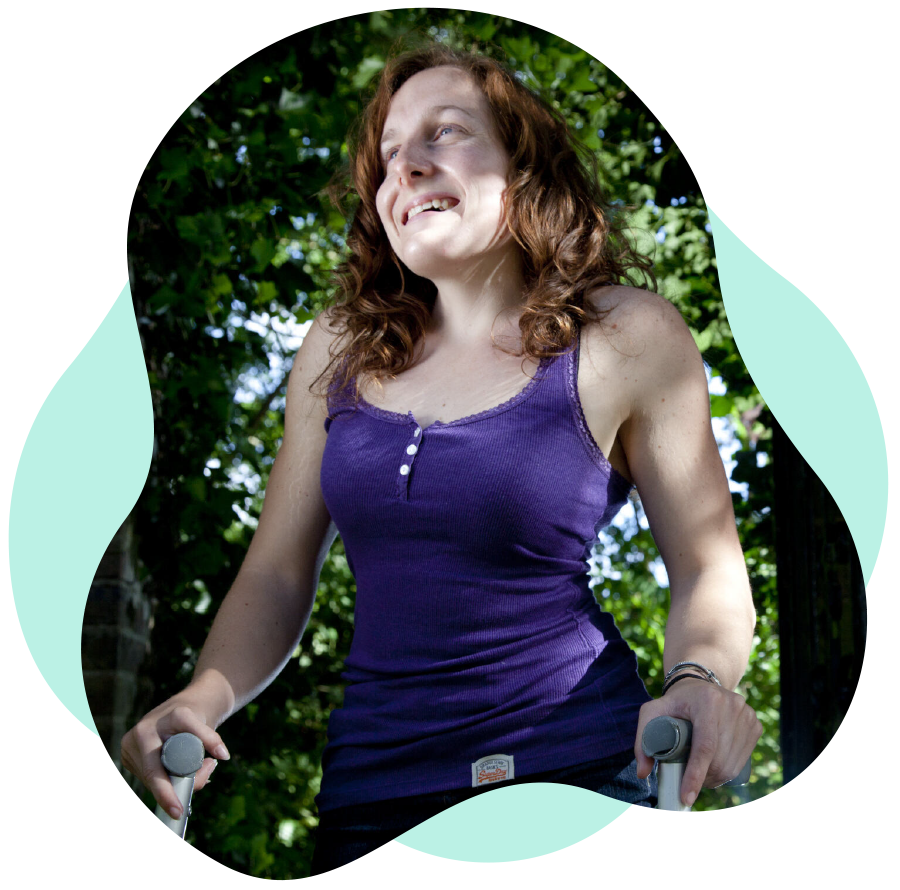What is degenerative scoliosis?
Adult degenerative scoliosis is divided into two categories; Degenerative (getting worse over time) and De Novo (new).
Degenerative scoliosis happens to an adult who has had a history of scoliosis. The spine starts to show wear and tear due to age and this wear can cause the spine to collapse, causing the curve of the spine to increase.
De novo (new) scoliosis first appears in adulthood without any history of the condition. Again, this is due to wear and tear as the person grows older and results in a curve of the spine.
In both types of this condition the facet joints and discs in the spine can degenerate and the pressure created by this degeneration can cause the spine to curve, this results in a diagnosis of adult degenerative scoliosis.
Adult degenerative scoliosis is typically diagnosed after an adult reaches the age of 50.
What has caused my adult degenerative scoliosis?
Adult degenerative scoliosis is caused by the degeneration of the facet joints and discs in the spine.
Facet Joints: Joints are the places in the body where two bones meet and the facet joints are between each of the vertebrae in your spine, they allow your back to be flexible and allow you to bend or twist. The pressure created by the degeneration of these joints can cause the spine to curve.
Discs: Discs are a part of the spine. They are round and flat on the top and bottom and are slightly flexible. They stop your vertebrae from rubbing against one another and also work like shock absorbers for the spine. Injury to, or degeneration of discs can lead to lower back pain and leg pain and can also cause numbness and weakness.
Because the facet joints and the discs are affected in adult degenerative scoliosis, adults can experience a curve in the spine, back pain, weakness in legs and/or feet and a loss of flexibility.
How will my adult degenerative scoliosis be diagnosed?
The specialist will use your medical notes and talk to you about your experiences to build a full history of your developing condition, they will ask you about any pain and discomfort you are experiencing. They will also examine your back to see if there is a visible curve or if one shoulder is higher than the other. Investigations may include one or more of the following:
- A standing X-ray to show the curve of the spine
- A CT scan (computed tomography scan) to produces detailed images of many structures inside the body, including the internal organs, blood vessels and bones
- An MRI scan (Magnetic resonance imaging) which uses strong magnetic fields and radio waves to produce more detailed pictures of the spine. This helps check that there are no problems with the spinal cord or the development of the nerves
What treatment will I receive?
Non-surgical interventions
Most patients with adult degenerative scoliosis are given non-surgical treatment which may include anti-inflammatory drugs for pain relief, physiotherapy for improving overall mobility, and low impact exercises to improve strength. If the medications and therapy do not help your condition, steroid or local anaesthetic injections into the muscle, joints, or spinal canal can help you manage your pain.
Surgical intervention
If these treatments do not help you to manage your condition a scoliosis specialist may talk to you about having a surgical procedure, often called ‘fusion surgery’, to correct the curve. The aim of this surgery is to relieve your pain and correct the adverse changes in your posture or balance. Surgery for adults is more challenging than for young people as adults may have other health concerns and recovery can also take longer, but your scoliosis specialist will explain the risks and benefits of surgery so that you can make an informed decision.
How will adult degenerative scoliosis affect my life?
Living with scoliosis can be challenging and sometimes painful and it is important that a person with scoliosis sees a scoliosis specialist. The pain created by a spinal curve can be treated in lots of different ways, often with very good outcomes, but everyone’s experience of living with scoliosis is different and this is why it is important for everyone to see a specialist who can advise them on a case by case basis.
It is important to note that curves in adults of less than 30 degrees rarely get bigger, but curves in adults that are 50 degrees or more in size may increase by an average of 1 degree per year and, in this instance, surgery is often advised.
If you need help or advice please call our Helpline on 020 8964 1166 or e-mail: info@ssr.org.uk.





